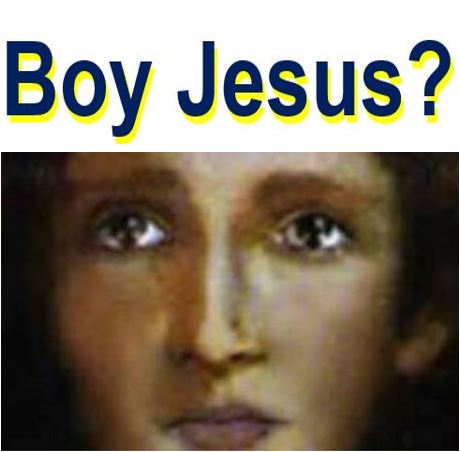Italian police investigators used the Turin Shroud image to generate a photo-fit image of Jesus Christ as child. They applied a technique that reverses the method used to generate current likenesses of senior mafia bosses and other criminals.
The Turin Shroud is a 14-foot long herring-bone linen sheet that appears to show the front and back impression of a bearded, long-haired man who suffered physical trauma in a manner consistent with crucifixion. There is a gash on the side of the face, consistent with Jesus’ lance-wound.
Believers are convinced the shroud is an image of Jesus Christ, while several forensic scientists say it is a fake made more than 1,000 years after Jesus died.

Is this what Jesus Christ looked like when he was a boy? If the Turin Shroud was a medieval fake, then clearly not. (Image: quotidiano.net)
The technique to produce an image of a child Jesus was used (the other way round) to produce an image of Bernardo Provenzano, a mafia arch-boss from a photograph taken in 1959. He was eventually captured, in part thanks to the photo-fit, in 2006.
An upcoming TV programme in Italy will explain the methods used to create the image of Jesus as a young boy.
The Turin Shroud will be displayed to the public for two months. Millions of people, including Pope Francis, are expected to come and pray before the relic.
Carbon dating tests reported in the academic journal Nature in 1998 estimated that the Turin Shroud was made between 1260 and 1390 – which if accurate would mean it was a medieval hoax.

Italian investigators created a series of photo-fit images in reverse. (Image: Rome Police)
Believers insist it is the real thing, and point to pollen grains they claim could only be found in the Holy Land.
Other eminent scientists, including Luigi Garlaschelli, an organic chemist from the University of Pavia, and Matteo Borrini, a professor of forensic anthropology who works at the John Moores University in Liverpool, are convinced the Turin Shroud is a fake.
In an interview with the New Scientist in April, Prof. Borrini said:
“If it’s a fake, then it’s a very interesting piece of art and human ingenuity.”
Borrini and Garlaschelli found that the marks on the Shroud did correspond to a crucifixion, but only if the arms were above the head in a ‘Y’ position, rather than the classic ‘T’.
Prof. Borrini said:
“This would have been a very painful position and one which would have created difficulty breathing. Someone crucified in this way may have died from asphyxiation.”
Video – Shroud depicts ‘Y’ crucifixion

